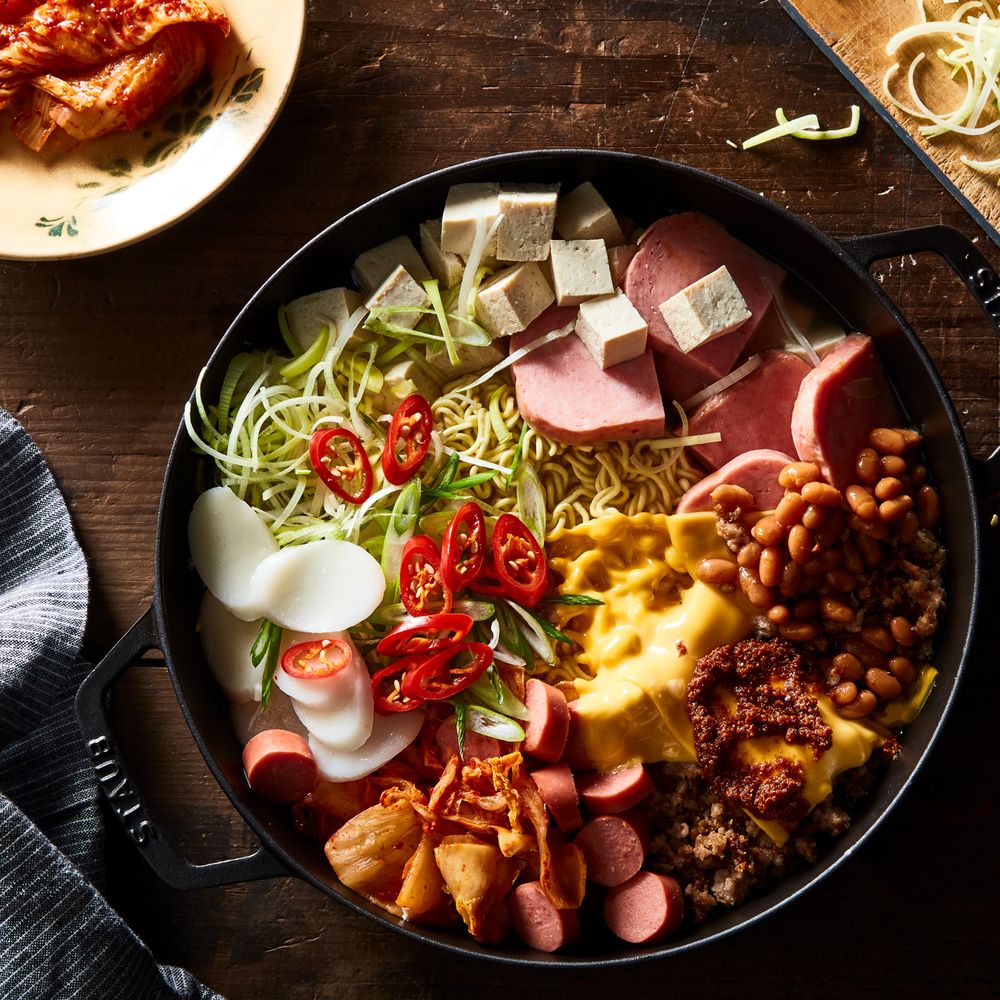Budae jjigae (army base stew)
Ragout and stew

Growing up, I only got to eat budae jjigae on rare occasions. My parents would bring out the portable butane gas burner from the pantry and place it in the middle of the round kitchen table where all of the neatly chopped ingredients were already set out. It was a departure from the more modest dishes like miyeokguk (seaweed soup) or tteokguk (rice cake soup) that we'd eat on most weeknights. In fact, we were accustomed to having the same soup heated and reheated for several consecutive days, sometimes even the entire week, until my mother could see the bottom of the pot.
<br />
<br />Budae jjigae, or "army base stew," was the opposite of that. We'd open the lid to the violently bubbling pot and, once the cloud of steam evaporated, get a clear view of the stew in which a medley of Korean staples were bobbing: thinly-cut enoki mushrooms, diced green onions, minced garlic, oval-shaped slices of white rice cake, squares of silky tofu, and of course kimchi. Red pepper powder, together with the kimchi, leant the soup base its alarmingly red color, brewing up a flavor that was quintessentially Korean. One whiff of it could nearly singe your nostril hairs and have you salivating like a jindo dog.

Comments